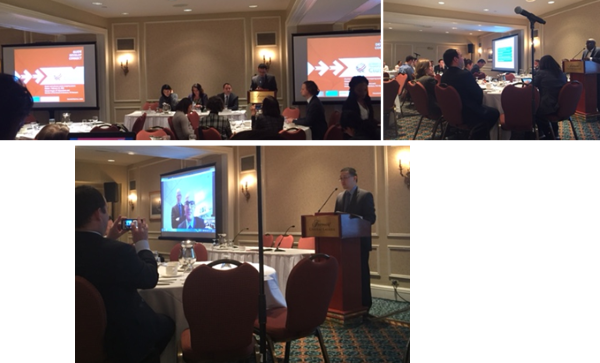Conference on Cluster and Asset Mapping: The Opportunity for Canada
With special thanks to our colleagues from the TCI Network, we would like to present you the outputs of the Canadian conference on cluster and asset mapping held on 17 February 2016: TCI member Department of Innovation, Science and Economic Development (ISED) Canada hosted a cluster conference gathering stakeholders from North America, including TCI President Christian Ketels and Board member Vincent Dugré. In this article, Jennifer Simms, Department of Innovation, Science and Economic Development Canada, Government of Canada, summarizes the results of the event.
On February 17, 2016 the Department of Innovation, Science and Economic Development (ISED) Canada hosted a conference that brought together cluster and asset mapping experts and practitioners from government, academia, and business to exchange best practices and key insights on cluster and asset mapping tools. Through presentations and interactive discussion, participants shared their perspectives on the opportunity for the Canadian federal government to further develop and promote these tools, as well as explore opportunities for partnerships.
Despite a record-breaking snowstorm in Ottawa the day before the conference was held (51 cm in one day!) we had a full room for the event, including representation from a number of Canadian federal departments, regional development agencies, provincial governments, academic groups, and members of the United States and Mexican embassies.
The day started with an opening address from Philip Jennings, Assistant Deputy Minister, ISED who spoke of his work to create stronger, more competitive industries and the important role that clusters play in spreading technological, skill and knowledge spillovers in an economy. Dr. Christian Ketels (President of the TCI Network) and Richard Bryden both of the Institute for Competitiveness and Prosperity, Harvard Business School, provided the morning keynote address. Participants heard about the evolution of cluster thinking, including the leading contributions made by Michael E. Porter, and the possibilities for establishing international standards for cluster mapping. The ambitions and key design considerations for the U.S. Cluster Map, a national economic initiative based at the Harvard Business School and sponsored by the U.S. Department of Commerce’s Economic Development Administration, was also shared with the audience.
To add to the North American discussion, Alfredo Sanchez and Dr. Amado Villarreal provided an overview of the cluster mapping experience in Mexico. Much collaborative work has been done under the iCluster subcommittee within the Mexico-United States Entrepreneurship and Innovation Council and Mexico is poised to publicly release a national cluster map this summer.
The conference also featured panel discussions with Canadian business and cluster practitioners who have developed exemplary asset mapping tools (e.g., http://www.chooselethbridge.ca/ and http://www.transportvirtualevent.com/) as well as academics who have done work on identifying Canadian clusters (e.g., http://www.competeprosper.ca/clusters/data and http://localideas.org/2014/06/22/cluster-atlas-of-canada/). A special thank you is extended to Vincent Dugré, Member of the Board of Directors, TCI Network, for showcasing the advanced asset mapping capabilities at the Quebec Ground Transportation Cluster.
The day ended with an open floor discussion on cluster and asset mapping in Canada, recognizing the excellent work being done here.
